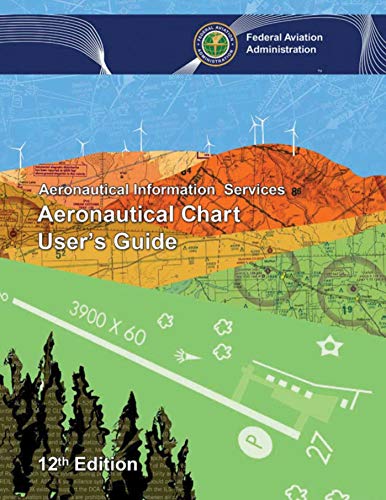Federal Aviation Administration(FAA)
Rotorcraft Flying Handbook
eBook
(Pentagon Publishing March 3, 2011)
The Rotorcraft Flying Handbook is designed as a technical manual for applicants who are preparing for their private, commercial, or flight instructor pilot certificates with a helicopter or gyroplane class rating. Certificated flight instructors may find this handbook a valuable training aid, since detailed coverage of aerodynamics, flight controls, systems, performance, flight maneuvers, emergencies, and aeronautical decision making is included. Contents: Chapter 1—Introduction to the Helicopter; Chapter 2—General Aerodynamics; Chapter 3—Aerodynamics of Flight; Chapter 4—Helicopter Flight Controls; Chapter 5—Helicopter Systems; Chapter 6—Rotorcraft Flight Manual (Helicopter); Chapter 7—Weight and Balance; Chapter 8 Performance; Chapter 9—Basic Flight Maneuvers; Chapter 10—Advanced Maneuvers; Chapter 11—Helicopter Emergencies; Chapter 12—Attitude Instrument Flying; Chapter 13—Night Operations; Chapter 14—Aeronautical Decision Making; Chapter 15—Introduction to the Gyroplane; Chapter 16—Aerodynamics of the Gyroplane; Chapter 17—Gyroplane Flight Controls; Chapter 18—Gyroplane Systems; Chapter 19—Rotorcraft Flight Manual
(Gyroplane); Chapter 20—Flight Operations; Chapter 21—Gyroplane Emergencies; Chapter 22—Gyroplane Aeronautical Decision Making; Glossary and index.
The Federal Aviation Administration (FAA) is an agency of the United States Department of Transportation with authority to regulate and oversee all aspects of civil aviation in the U.S. (National Airworthiness Authority). The Federal Aviation Act of 1958 created the group under the name "Federal Aviation Agency", and adopted its current name in 1967 when it became a part of the United States Department of Transportation. The Federal Aviation Administration's major roles include: Regulating U.S. commercial space transportation. Regulating air navigation facilities' geometry and Flight inspection standards. Encouraging and developing civil aeronautics, including new aviation technology. Issuing, suspending, or revoking pilot certificates. Regulating civil aviation to promote safety, especially through local offices called Flight Standards District Offices. Developing and operating a system of air traffic control and navigation for both civil and military aircraft. Researching and developing the National Airspace System and civil aeronautics. Developing and carrying out programs to control aircraft noise and other environmental effects of civil aviation.
(Gyroplane); Chapter 20—Flight Operations; Chapter 21—Gyroplane Emergencies; Chapter 22—Gyroplane Aeronautical Decision Making; Glossary and index.
The Federal Aviation Administration (FAA) is an agency of the United States Department of Transportation with authority to regulate and oversee all aspects of civil aviation in the U.S. (National Airworthiness Authority). The Federal Aviation Act of 1958 created the group under the name "Federal Aviation Agency", and adopted its current name in 1967 when it became a part of the United States Department of Transportation. The Federal Aviation Administration's major roles include: Regulating U.S. commercial space transportation. Regulating air navigation facilities' geometry and Flight inspection standards. Encouraging and developing civil aeronautics, including new aviation technology. Issuing, suspending, or revoking pilot certificates. Regulating civil aviation to promote safety, especially through local offices called Flight Standards District Offices. Developing and operating a system of air traffic control and navigation for both civil and military aircraft. Researching and developing the National Airspace System and civil aeronautics. Developing and carrying out programs to control aircraft noise and other environmental effects of civil aviation.
- Pages
- 208
Enjoy reading Rotorcraft Flying Handbook? You may also like these books
-
Y

Federal Aviation Administration
Pilot's Handbook of Aeronautical Knowledge
Paperback (Skyhorse July 25, 2017) -
W

Federal Aviation Administration
FAR/AIM 2020: Up-to-Date FAA Regulations / Aeronautical Information Manual
Paperback (Skyhorse Nov. 19, 2019) -
Z+

Federal Aviation Administration
Aviation Instructor's Handbook: FAA-H-8083-9A
Paperback (Skyhorse May 2, 2017) -
W

Federal Aviation Administration
FAR/AIM 2019: Up-to-Date FAA Regulations / Aeronautical Information Manual
Paperback (Skyhorse Nov. 20, 2018) -
W

Federal Aviation Administration
FAR/AIM 2018: Up-to-Date FAA Regulations / Aeronautical Information Manual
Paperback (Skyhorse Oct. 31, 2017) -
Z

Federal Aviation Administration
Aviation Weather: FAA Advisory Circular
Paperback (Skyhorse July 25, 2017) -

Federal Aviation Administration
FAR/AIM 2021: Up-to-Date FAA Regulations / Aeronautical Information Manual
Paperback (Skyhorse Nov. 3, 2020) -

Federal Aviation Administration (FAA)
Instrument Procedures Handbook: ASA FAA-H-8083-16A
Paperback (CreateSpace Independent Publishing Platform ) -
Z+

Federal Aviation Administration
Powered Parachute Flying Handbook
Paperback (Skyhorse Feb. 28, 2011) -
W

Federal Aviation Administration
FAR/AIM 2015: Federal Aviation Regulations/Aeronautical Information Manual
Paperback (Skyhorse Nov. 18, 2014) -

Federal Aviation Administration
Commercial Pilot Practical Test Standards for Lighter-Than-Air, Balloon and Airship
Paperback (Pentagon Publishing Oct. 7, 2011) -

Federal Aviation Administration
Airplane Flying Handbook
Paperback (Skyhorse Publishing May 1, 2007) -
Z+

Federal Aviation Administration
Seaplane, Skiplane, and Float/Ski Equipped Helicopter Operations Handbook
Hardcover (Skyhorse Feb. 8, 2011)







